Here they are, then, the best of the best albums that have brought untold levels of wonderment into my ears and mind throughout this year. i cannot recommend them highly enough – this is music at its most literally essential.
20 | Juhani Silvola – Post-Biological Wildlife
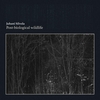 “Rather than conceptualising a long-distant past, Silvola’s outlook is staunchly forward, looking ahead to a futuristic vision that may or may not involve people. Or, at least, ‘people’ as we currently understand the term: the “post-biology” at play here is evidently a convoluted amalgam of human, animal and machine elements. Opening track ‘Ritualrytmikk’ … brings together an assortment of percussive taps and beats amidst electronic blips and bleeps such that the distinction between them, though always evident, seems irrelevant. … ’20th Century Meditation’ turns metric regularity into a steady state textural foundation over which gentle plinky-plonky melodic fragments meander. As such, it evokes the progenitors of ambient music … while sounding unequivocally new. The title track is equally committed to just a single idea, setting up a habitat within which ersatz bird- and insect-sounds proliferate, joined later by gusts generated by an artificial storm. … Most direct of all in its biotech allusions is ‘Machines of Loving Grace’ (the title of which evokes both the optimism of Richard Brautigan’s original poem and the pessimism of Adam Curtis’ documentary series), where alternately growling and shrill pitches suggest a dial being wildly rotated on dated electronic equipment, in the process becoming caked in distortion. Post-biological wildlife is a beautifully strange and evocative album, often so vivid that its soundworld becomes all-immersive, like strapping on a virtual reality headset.” (reviewed in July) [CD/Digital]
“Rather than conceptualising a long-distant past, Silvola’s outlook is staunchly forward, looking ahead to a futuristic vision that may or may not involve people. Or, at least, ‘people’ as we currently understand the term: the “post-biology” at play here is evidently a convoluted amalgam of human, animal and machine elements. Opening track ‘Ritualrytmikk’ … brings together an assortment of percussive taps and beats amidst electronic blips and bleeps such that the distinction between them, though always evident, seems irrelevant. … ’20th Century Meditation’ turns metric regularity into a steady state textural foundation over which gentle plinky-plonky melodic fragments meander. As such, it evokes the progenitors of ambient music … while sounding unequivocally new. The title track is equally committed to just a single idea, setting up a habitat within which ersatz bird- and insect-sounds proliferate, joined later by gusts generated by an artificial storm. … Most direct of all in its biotech allusions is ‘Machines of Loving Grace’ (the title of which evokes both the optimism of Richard Brautigan’s original poem and the pessimism of Adam Curtis’ documentary series), where alternately growling and shrill pitches suggest a dial being wildly rotated on dated electronic equipment, in the process becoming caked in distortion. Post-biological wildlife is a beautifully strange and evocative album, often so vivid that its soundworld becomes all-immersive, like strapping on a virtual reality headset.” (reviewed in July) [CD/Digital]
19 | Tom Holkenborg – Alita: Battle Angel (Original Motion Picture Soundtrack)
 It came as something of a surprise that Robert Rodriguez’s sci-fi blockbuster turned out to be so much more than just another weightless crashy-smashy genre piece, laden with impressive amounts of emotional heft and personal sensitivity. Tom Holkenborg’s score is similarly affecting, and while it incorporates vast quantities of scale when needed, what’s most impressive about it – and, in fact, what characterises it as a whole – is its lyrical range and depth. Motivically strong, stronger still are its soaring, searching melodic instincts, capturing with a poignant immediacy both the joy and the pain experienced by the semi-human central protoganist, Alita. It’s the score’s dramatic range that makes this most potent, Holkenborg prepared to reduce his huge orchestral forces to chamber-size, soloistic proportions to spend time exploring the most intimate aspects of the narrative. Set beside these passages – interior in both a real and figurative sense – its subsequent vast, often unexpected, surges and swells feel so overwhelmingly demonstrative they practically cause the music to burst. A film score that does what so few seem inclined or even able to do these days: make us understand and genuinely care about its characters. [CD/Digital]
It came as something of a surprise that Robert Rodriguez’s sci-fi blockbuster turned out to be so much more than just another weightless crashy-smashy genre piece, laden with impressive amounts of emotional heft and personal sensitivity. Tom Holkenborg’s score is similarly affecting, and while it incorporates vast quantities of scale when needed, what’s most impressive about it – and, in fact, what characterises it as a whole – is its lyrical range and depth. Motivically strong, stronger still are its soaring, searching melodic instincts, capturing with a poignant immediacy both the joy and the pain experienced by the semi-human central protoganist, Alita. It’s the score’s dramatic range that makes this most potent, Holkenborg prepared to reduce his huge orchestral forces to chamber-size, soloistic proportions to spend time exploring the most intimate aspects of the narrative. Set beside these passages – interior in both a real and figurative sense – its subsequent vast, often unexpected, surges and swells feel so overwhelmingly demonstrative they practically cause the music to burst. A film score that does what so few seem inclined or even able to do these days: make us understand and genuinely care about its characters. [CD/Digital]
18 | Zbigniew Karkowski – Encumbrance
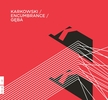 “… the disc includes two performances of the work, which may seem peculiar but turns out to be extremely revealing about which aspects of the music are fixed and which are variable. … The structure is typically Karkowskian, positioning slabs of connected but contrasting material one after the other, lending the work a monolithic quality. Encumbrance has four such slabs. The first emerges from a deep bass tone, over which the male voices perform a litany of moans and groans, the female voices a network of rapid, indecipherable whispers that quickly become an abstract textural layer of noise. The second section abruptly switches to the close juxtaposition of electronic tones and sustained sung pitches, some static, some rising, while the third plunges into an everywhere of noise, within which movement can be heard (or at least, sensed: at times it’s not at all clear what precisely is happening – or indeed if anything is happening at all, possibly being an illusion); the voices here are much more inaudible. The work concludes with another amalgam of electronics and voices, echoing the second section, before ending back in the depths on a deep drone. … these recordings capture fully … the sense of radical, experimental play running throughout the work, making the progression through each slab of sound, and from one slab to the next, a real-time act of trial and error resulting in the most fantastical of sonic collisions and collusions.” (reviewed in August) [CD]
“… the disc includes two performances of the work, which may seem peculiar but turns out to be extremely revealing about which aspects of the music are fixed and which are variable. … The structure is typically Karkowskian, positioning slabs of connected but contrasting material one after the other, lending the work a monolithic quality. Encumbrance has four such slabs. The first emerges from a deep bass tone, over which the male voices perform a litany of moans and groans, the female voices a network of rapid, indecipherable whispers that quickly become an abstract textural layer of noise. The second section abruptly switches to the close juxtaposition of electronic tones and sustained sung pitches, some static, some rising, while the third plunges into an everywhere of noise, within which movement can be heard (or at least, sensed: at times it’s not at all clear what precisely is happening – or indeed if anything is happening at all, possibly being an illusion); the voices here are much more inaudible. The work concludes with another amalgam of electronics and voices, echoing the second section, before ending back in the depths on a deep drone. … these recordings capture fully … the sense of radical, experimental play running throughout the work, making the progression through each slab of sound, and from one slab to the next, a real-time act of trial and error resulting in the most fantastical of sonic collisions and collusions.” (reviewed in August) [CD]
17 | Holly Herndon – Proto
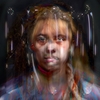 Reinforced by its title, i can’t help hearing Holly Herndon’s latest album as a life cycle of sorts: of a new, prototypical, form of song. Song is, in fact, the main thing that keeps the album as a whole anchored, acting as a point of reference, a definition of something familiar, out of which these thirteen experimental pieces arise. The voice is paramount throughout, conveying a futuristic lyricism that’s sometimes practically swamped by layers of electronica, other times thrust into the spotlight either solo or in varying forms of group singing and vocalise, evoking folk songs and communal hymns and anthems. The fact that the first two tracks progress from ‘Birth’ to ‘Alienation’ says something about how radical they are, yet a recurring feature of all the songs is the way in which they combine slow, heavy, pounding beats and bass with floating, soaring melodies, so endlessly full of uplift that they in turn become uplifting. Another way of putting this is to say that, despite their weight, many of the arrangements here seem almost lighter than air, Herndon capturing a rare kind of buoyancy that invariably proves to be downright irresistible. It’s not always clear what’s being sung, or what it means, but on a visceral level Proto could hardly be more powerfully immediate. [CD/Vinyl/Digital]
Reinforced by its title, i can’t help hearing Holly Herndon’s latest album as a life cycle of sorts: of a new, prototypical, form of song. Song is, in fact, the main thing that keeps the album as a whole anchored, acting as a point of reference, a definition of something familiar, out of which these thirteen experimental pieces arise. The voice is paramount throughout, conveying a futuristic lyricism that’s sometimes practically swamped by layers of electronica, other times thrust into the spotlight either solo or in varying forms of group singing and vocalise, evoking folk songs and communal hymns and anthems. The fact that the first two tracks progress from ‘Birth’ to ‘Alienation’ says something about how radical they are, yet a recurring feature of all the songs is the way in which they combine slow, heavy, pounding beats and bass with floating, soaring melodies, so endlessly full of uplift that they in turn become uplifting. Another way of putting this is to say that, despite their weight, many of the arrangements here seem almost lighter than air, Herndon capturing a rare kind of buoyancy that invariably proves to be downright irresistible. It’s not always clear what’s being sung, or what it means, but on a visceral level Proto could hardly be more powerfully immediate. [CD/Vinyl/Digital]
16 | Ståle Storløkken – The Haze of Sleeplessness
 Pervading the seven movements of The Haze of Sleeplessness is an impression, rather than a full-on evocation (still less an imitation), of the ’70s Kosmische musik era. Structurally speaking the music is governed more by drift and caprice than by anything like a clear-cut plan, Storløkken setting up a vague mise-en-scene of clunk and scratch, sometimes shaking with distortion and often highly reverberant, backdrops to a foreground of aimless but arresting passing shapes and ideas. This is balanced by the album’s most engrossing aspect, which are the many melodies that are introduced into these atmospheres. Slow to unfold, and to an extent as spontaneous as their environs, these sinewy melodic tendrils – beautifully emerging via shimmering analogue timbres, underpinned by roaming bass figures – are imbued with a kind of ecstatic glow, like the stem of a flower rising and turning to stare at the sun. Though the artwork depicts clouds, and the album’s title suggests a nocturnal experience, the brilliant intensity exhibited here indicates an altogether more dazzling soundworld, particularly in ‘Skyrocket Hotel’ but nowhere more so than closing track ‘Nitro Valley’, where bursts of pitch are so impossibly bright they collapse into dissonance and distortion. Stunning. [CD/Vinyl/Digital]
Pervading the seven movements of The Haze of Sleeplessness is an impression, rather than a full-on evocation (still less an imitation), of the ’70s Kosmische musik era. Structurally speaking the music is governed more by drift and caprice than by anything like a clear-cut plan, Storløkken setting up a vague mise-en-scene of clunk and scratch, sometimes shaking with distortion and often highly reverberant, backdrops to a foreground of aimless but arresting passing shapes and ideas. This is balanced by the album’s most engrossing aspect, which are the many melodies that are introduced into these atmospheres. Slow to unfold, and to an extent as spontaneous as their environs, these sinewy melodic tendrils – beautifully emerging via shimmering analogue timbres, underpinned by roaming bass figures – are imbued with a kind of ecstatic glow, like the stem of a flower rising and turning to stare at the sun. Though the artwork depicts clouds, and the album’s title suggests a nocturnal experience, the brilliant intensity exhibited here indicates an altogether more dazzling soundworld, particularly in ‘Skyrocket Hotel’ but nowhere more so than closing track ‘Nitro Valley’, where bursts of pitch are so impossibly bright they collapse into dissonance and distortion. Stunning. [CD/Vinyl/Digital]
15 | Tanya Barany – Lights Disappear
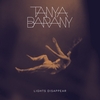 Swiss singer-songwriter Tanya Barany’s debut album is another where the cover artwork tells you a lot about what to expect. An illuminated figure falling in an otherwise black space, it’s an image that, together with the title, indicates that the pop status of these seven songs is not simply dark but downright lugubrious. Only ostensibly so, though, or at least not in their entirety. Barany’s song structures have a tendency to act like diptychs, with a played down, introverted, prosaic and at times rather doleful first half. But then they expand rapidly, exploding into shining climactic displays, unleashing the pent-up emotion fizzing within their respective cores. These are often coated in mild quantities of distortion, implying a form of impassioned ‘clipping’ due to the force of Barany’s vocals. In the case of one of the songs, ‘Sea’, this diptych approach is literal, the song practically stopping two minutes in, tilting on its axis to transform into a parallel song, building to an angry, searing climax, Barany increasingly demanding “Why should I go? Why should I stay?” At just under 33 minutes, Lights Disappear is one of the shortest entries in this Best Albums list, but what it lacks in duration it overwhelmingly makes up for in sheer power. [Digital]
Swiss singer-songwriter Tanya Barany’s debut album is another where the cover artwork tells you a lot about what to expect. An illuminated figure falling in an otherwise black space, it’s an image that, together with the title, indicates that the pop status of these seven songs is not simply dark but downright lugubrious. Only ostensibly so, though, or at least not in their entirety. Barany’s song structures have a tendency to act like diptychs, with a played down, introverted, prosaic and at times rather doleful first half. But then they expand rapidly, exploding into shining climactic displays, unleashing the pent-up emotion fizzing within their respective cores. These are often coated in mild quantities of distortion, implying a form of impassioned ‘clipping’ due to the force of Barany’s vocals. In the case of one of the songs, ‘Sea’, this diptych approach is literal, the song practically stopping two minutes in, tilting on its axis to transform into a parallel song, building to an angry, searing climax, Barany increasingly demanding “Why should I go? Why should I stay?” At just under 33 minutes, Lights Disappear is one of the shortest entries in this Best Albums list, but what it lacks in duration it overwhelmingly makes up for in sheer power. [Digital]
14 | The Ballet – Matchy Matchy
 Among the most heartfelt and personal music i’ve heard all year, the dozen short songs on Matchy Matchy read like a sequence of intimate conversations, instant messages, heart-to-hearts, Grindr exchanges, sweet nothings and love letters. As such, they express a huge array of amorous incentives and aspirations, along the way teasing to the surface the emotional gamut from dominance to vulnerability. The fact that these songs are articulated via light, often achingly sweet, forms of synth- and chamber pop (kind of Belle & Sebastian meets Kraftwerk) only makes their switches between personal and impersonal, interest and disinterest, feel all the more human, above all displaying the playfulness that ideally resides at the core of all romantic entanglements, physical or otherwise. Furthermore the lyrics, transcending generational divides, could be the sentiments of anyone from 16 to 116, highlighting the agelessness of love and sexual desire. The whole album is a litany of highlights, but ‘Your Boyfriend’ – with its ultra-simple “I just wanna be your boyfriend” refrain – and ‘Am I Dreaming?’ – like an ’80s blushing flush of romantic overload – take the music to even more exquisitely charming heights. [Vinyl/Digital]
Among the most heartfelt and personal music i’ve heard all year, the dozen short songs on Matchy Matchy read like a sequence of intimate conversations, instant messages, heart-to-hearts, Grindr exchanges, sweet nothings and love letters. As such, they express a huge array of amorous incentives and aspirations, along the way teasing to the surface the emotional gamut from dominance to vulnerability. The fact that these songs are articulated via light, often achingly sweet, forms of synth- and chamber pop (kind of Belle & Sebastian meets Kraftwerk) only makes their switches between personal and impersonal, interest and disinterest, feel all the more human, above all displaying the playfulness that ideally resides at the core of all romantic entanglements, physical or otherwise. Furthermore the lyrics, transcending generational divides, could be the sentiments of anyone from 16 to 116, highlighting the agelessness of love and sexual desire. The whole album is a litany of highlights, but ‘Your Boyfriend’ – with its ultra-simple “I just wanna be your boyfriend” refrain – and ‘Am I Dreaming?’ – like an ’80s blushing flush of romantic overload – take the music to even more exquisitely charming heights. [Vinyl/Digital]
13 | Hildur Guðnadóttir – Chernobyl (Music from the HBO Miniseries)
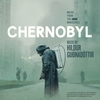 For one of the most engrossing, terrifying TV series of the year, Hildur Guðnadóttir has composed a score that doesn’t even for a second flinch from the relentless pressure of the narrative. Yet she does this not by trying to pack a literal punch, but by creating music that has the same kind of slow, insidious spread as the deadly radiation seeping through each episode. Chords hover and wobble precariously, pitches linger ominously, amid textures that threaten to erode away their existence through their varying levels and forms of insistent abrasion. A lot of the time, the sense of threat her music conveys is inversely proportional to the amount of activity actually going on within it, working with the visual images to allow our imaginations to fill in the increasingly horrific blanks. Occasional sonic traces taken from an actual nuclear reactor only make the score more oppressively authentic and claustrophobic. A world away from the blank histrionics of usual Hollywood fare, Hildur’s chillingly masterful score doesn’t merely depict disaster but plunges us deep into its heart. [CD/Vinyl/Digital]
For one of the most engrossing, terrifying TV series of the year, Hildur Guðnadóttir has composed a score that doesn’t even for a second flinch from the relentless pressure of the narrative. Yet she does this not by trying to pack a literal punch, but by creating music that has the same kind of slow, insidious spread as the deadly radiation seeping through each episode. Chords hover and wobble precariously, pitches linger ominously, amid textures that threaten to erode away their existence through their varying levels and forms of insistent abrasion. A lot of the time, the sense of threat her music conveys is inversely proportional to the amount of activity actually going on within it, working with the visual images to allow our imaginations to fill in the increasingly horrific blanks. Occasional sonic traces taken from an actual nuclear reactor only make the score more oppressively authentic and claustrophobic. A world away from the blank histrionics of usual Hollywood fare, Hildur’s chillingly masterful score doesn’t merely depict disaster but plunges us deep into its heart. [CD/Vinyl/Digital]
12 | Jenny Hval – The Practice of Love
 i mean it in absolutely the best sense possible when i say that i’ve completely given up trying to guess what Jenny Hval is going to do next. Consistently inconsistent, predictably unpredictable, her latest album The Practice of Love moves away from the more avant-garde experimentalism of some of her previous albums, picking up the art pop threads of 2016’s Blood Bitch for a delicious octet of songs dripping with pop trappings while never remotely becoming limited or defined by them. This is due in no small part to the way these trappings are aligned – or, more often misaligned – with the free-flowing poetry of Hval’s words, which for the most part bear little to no relation to conventional pop structures. In lieu of choruses, lines occasionally recur forming the semblance of something between a refrain and a nagging, half-remembered dream. Driven on by restless beat patterns and laser-focused synth arpeggios, the apparent incongruity of these elements in contrast to Hval’s gentle, at times almost dainty, vocals is quickly proved false. They blend and complement each other perfectly, and in terms of both its lyrical and musical language, this is avant-pop at its most magnificent. [CD/Vinyl/Digital]
i mean it in absolutely the best sense possible when i say that i’ve completely given up trying to guess what Jenny Hval is going to do next. Consistently inconsistent, predictably unpredictable, her latest album The Practice of Love moves away from the more avant-garde experimentalism of some of her previous albums, picking up the art pop threads of 2016’s Blood Bitch for a delicious octet of songs dripping with pop trappings while never remotely becoming limited or defined by them. This is due in no small part to the way these trappings are aligned – or, more often misaligned – with the free-flowing poetry of Hval’s words, which for the most part bear little to no relation to conventional pop structures. In lieu of choruses, lines occasionally recur forming the semblance of something between a refrain and a nagging, half-remembered dream. Driven on by restless beat patterns and laser-focused synth arpeggios, the apparent incongruity of these elements in contrast to Hval’s gentle, at times almost dainty, vocals is quickly proved false. They blend and complement each other perfectly, and in terms of both its lyrical and musical language, this is avant-pop at its most magnificent. [CD/Vinyl/Digital]
11 | Esa-Pekka Salonen – Cello Concerto
 “A great deal of the first two movements occupies a kind of dreamscape, with all the connotations of confusion and unpredictability that that suggests. In the first movement … this manifests primarily through a push-pull interaction between forward movement and suspension, with soloist and orchestra alike frequently seeming compelled simply to pause and marvel at their own fantastical textures. … there’s an increasing quantity of counterpoint, the woodwinds in particular taking the most assertive turns to engage in one-to-ones with the cellist. In the second movement, there’s a vague echo of Messiaen in the way these contrapuntal episodes occupy its sedate sleepiness, like birds engaging in drowsy discourse. … While there are numerous instances of radiant stasis in the first and second movements, Salonen turns over the third to energy and momentum. There are times when it evokes the kind of ritualised dance of Stravinsky’s Rite, though the overall emphasis is on a more generalised fun and liveliness, the concerto essentially coming out of the other side from the profundity and ecstasy of earlier. … Ultimately, it’s in keeping with all that went before, Salonen directing its unpredictable caprice into a party atmosphere, but its stratospheric closing moments hint that the earlier tone of reflection remains an integral part of its music.” (reviewed in July) [CD/Digital]
“A great deal of the first two movements occupies a kind of dreamscape, with all the connotations of confusion and unpredictability that that suggests. In the first movement … this manifests primarily through a push-pull interaction between forward movement and suspension, with soloist and orchestra alike frequently seeming compelled simply to pause and marvel at their own fantastical textures. … there’s an increasing quantity of counterpoint, the woodwinds in particular taking the most assertive turns to engage in one-to-ones with the cellist. In the second movement, there’s a vague echo of Messiaen in the way these contrapuntal episodes occupy its sedate sleepiness, like birds engaging in drowsy discourse. … While there are numerous instances of radiant stasis in the first and second movements, Salonen turns over the third to energy and momentum. There are times when it evokes the kind of ritualised dance of Stravinsky’s Rite, though the overall emphasis is on a more generalised fun and liveliness, the concerto essentially coming out of the other side from the profundity and ecstasy of earlier. … Ultimately, it’s in keeping with all that went before, Salonen directing its unpredictable caprice into a party atmosphere, but its stratospheric closing moments hint that the earlier tone of reflection remains an integral part of its music.” (reviewed in July) [CD/Digital]
10 | Enno Poppe – Rundfunk
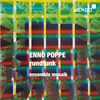 Despite having been somewhat underwhelmed by Rundfunk when hearing it live at the 2018 Huddersfield Festival, Ensemble Mosaik’s rendition of the piece on this disc has emphatically convinced me otherwise. In some ways it bears comparisons with Wayne Siegel’s Celebration (one of my Best Albums of 2017), inasmuch as the piece sounds as if it could be the unhinged product of computer-controlled or AI-determined creativity. In the same way, there’s an underlying jostling between analytical and playful impulses, the former seeking to get to grips with how sounds can be made, developed and connected together, the latter concerned with little more than simply mucking about with them. While this leads to a certain kind of unpredictability, the central movement indicates something yet more unexpected: a deeply involving piece where the nine synthesizers unite to explore a soundscape of extended intermingling pitch and noise elements, shimmering and juddering against each other, sounding something like a vast extrapolation of the overtone spectrum of a bell strike. Where the rest of Rundfunk is unadulterated joy, its centre is something altogether more contemplative. [CD/Digital]
Despite having been somewhat underwhelmed by Rundfunk when hearing it live at the 2018 Huddersfield Festival, Ensemble Mosaik’s rendition of the piece on this disc has emphatically convinced me otherwise. In some ways it bears comparisons with Wayne Siegel’s Celebration (one of my Best Albums of 2017), inasmuch as the piece sounds as if it could be the unhinged product of computer-controlled or AI-determined creativity. In the same way, there’s an underlying jostling between analytical and playful impulses, the former seeking to get to grips with how sounds can be made, developed and connected together, the latter concerned with little more than simply mucking about with them. While this leads to a certain kind of unpredictability, the central movement indicates something yet more unexpected: a deeply involving piece where the nine synthesizers unite to explore a soundscape of extended intermingling pitch and noise elements, shimmering and juddering against each other, sounding something like a vast extrapolation of the overtone spectrum of a bell strike. Where the rest of Rundfunk is unadulterated joy, its centre is something altogether more contemplative. [CD/Digital]
9 | Tim Clément & Lance Austin Olsen – Dark Night On The Black Dog Highway
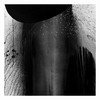 The title instantly suggests something Lynchian, and this collaboration from Tim Clément and Lance Austin Olsen does indeed inhabit the same kind of black ambient space favoured by the great director. Ordinarily, repeated listenings bring increased familiarity with the language and the details of music, but in the case of Dark Night On The Black Dog Highway i find that the more time i spend with it, it remains stubbornly, intriguingly elusive, hovering at the periphery of my perception, unable to be brought fully into focus. Paradoxically, that only makes its dark atmospherics more palpable, more proximal, its fundamental ambiance – either in the form of ‘neutral’ field recordings or deep electronic drones – being infiltrated by distant looping fragments like hauntological artefacts, instances of impossible-to-decipher distorted speech, glancing blows from passing sonic objects and protracted tones that the ear tries to form into chords and frame them as possible progressions. Ultimately, what keeps me coming back to this remarkable album is this very elusiveness, lending it the ability to be something new on each listening, to project new aspects and details from within while obscuring previously-revealed elements. Every trip down the Black Dog Highway is different from the last, and it’s always a wondrous, disorienting experience. [Digital]
The title instantly suggests something Lynchian, and this collaboration from Tim Clément and Lance Austin Olsen does indeed inhabit the same kind of black ambient space favoured by the great director. Ordinarily, repeated listenings bring increased familiarity with the language and the details of music, but in the case of Dark Night On The Black Dog Highway i find that the more time i spend with it, it remains stubbornly, intriguingly elusive, hovering at the periphery of my perception, unable to be brought fully into focus. Paradoxically, that only makes its dark atmospherics more palpable, more proximal, its fundamental ambiance – either in the form of ‘neutral’ field recordings or deep electronic drones – being infiltrated by distant looping fragments like hauntological artefacts, instances of impossible-to-decipher distorted speech, glancing blows from passing sonic objects and protracted tones that the ear tries to form into chords and frame them as possible progressions. Ultimately, what keeps me coming back to this remarkable album is this very elusiveness, lending it the ability to be something new on each listening, to project new aspects and details from within while obscuring previously-revealed elements. Every trip down the Black Dog Highway is different from the last, and it’s always a wondrous, disorienting experience. [Digital]
8 | Stefan Fraunberger – Quellgeister #3 Bussd
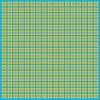 “There’s always the clear sense of a music on the brink of, and in the wake of, ruin, a dogged act of creation taking place in absolute certainty of its imminent, permanent, demise. … Yet what sets Quellgeister #3 apart from the previous two instalments is the way in which Fraunberger manages to enable the organ to transcend not merely its delapidation but its very nature as a musical instrument. Various mechanical elements come into play in such a way that they suggest not so much music as the product of some kind of non-human agency, either a bizarre natural phenomenon … or a machine-driven process. Oscillating clatter and cycling patterns of wind are the context for several pieces on the album, preceding any actual notes from the organ and often permeating them thereafter. … The most outstanding tracks merge these quasi-natural or machine-like perceptions into more overtly human acts of music expression. ‘Elegie’ progresses beyond waves of crashing noise to articulate a slow lament, made yet more melancholic due to the inconsistency of its notes, some projecting so loudly they could practically drill into your skull, while others are so weak and peppered with extraneous sounds and overtones that they vividly highlight how knackered the instrument is.” (reviewed in October) [Vinyl/Digital]
“There’s always the clear sense of a music on the brink of, and in the wake of, ruin, a dogged act of creation taking place in absolute certainty of its imminent, permanent, demise. … Yet what sets Quellgeister #3 apart from the previous two instalments is the way in which Fraunberger manages to enable the organ to transcend not merely its delapidation but its very nature as a musical instrument. Various mechanical elements come into play in such a way that they suggest not so much music as the product of some kind of non-human agency, either a bizarre natural phenomenon … or a machine-driven process. Oscillating clatter and cycling patterns of wind are the context for several pieces on the album, preceding any actual notes from the organ and often permeating them thereafter. … The most outstanding tracks merge these quasi-natural or machine-like perceptions into more overtly human acts of music expression. ‘Elegie’ progresses beyond waves of crashing noise to articulate a slow lament, made yet more melancholic due to the inconsistency of its notes, some projecting so loudly they could practically drill into your skull, while others are so weak and peppered with extraneous sounds and overtones that they vividly highlight how knackered the instrument is.” (reviewed in October) [Vinyl/Digital]
7 | Davíð Brynjar Franzson – Longitude
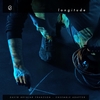 Goodness, where to begin? On the one hand, i can’t pretend to be able to make any meaningful connection between Franzson’s brief but surprisingly specific programme note and what i actually hear in the music – but i don’t think that has ever mattered less. This is one of those works that, at first, you think you have the measure of it; its shape, its tone and its behaviour all become clear in the first five or ten minutes, and to an extent there are no significant deviations from this in the 40 minutes that follow. Yet, though it’s difficult to grasp or describe quite why this is so much the case, once Longitude begins it’s impossible to turn away from it. It’s easy to use a word like ‘mesmeric’ for such music, but in this case that word is literally right: everything else vanishes, and for the duration of the piece it’s as if this is all that there is. We become not merely immersed but wholly and inexorably encapsulated within its cycling waves of material, akin to a halting kind of breathing, its intimate, intricate tracery regularly projecting the most heart-stoppingly vivid snarls and growls from the players of Ensemble Adapter, later embellished with glitching bursts of electronic buzz. Gorgeous and somewhat terrifying in equal measure. [Digital]
Goodness, where to begin? On the one hand, i can’t pretend to be able to make any meaningful connection between Franzson’s brief but surprisingly specific programme note and what i actually hear in the music – but i don’t think that has ever mattered less. This is one of those works that, at first, you think you have the measure of it; its shape, its tone and its behaviour all become clear in the first five or ten minutes, and to an extent there are no significant deviations from this in the 40 minutes that follow. Yet, though it’s difficult to grasp or describe quite why this is so much the case, once Longitude begins it’s impossible to turn away from it. It’s easy to use a word like ‘mesmeric’ for such music, but in this case that word is literally right: everything else vanishes, and for the duration of the piece it’s as if this is all that there is. We become not merely immersed but wholly and inexorably encapsulated within its cycling waves of material, akin to a halting kind of breathing, its intimate, intricate tracery regularly projecting the most heart-stoppingly vivid snarls and growls from the players of Ensemble Adapter, later embellished with glitching bursts of electronic buzz. Gorgeous and somewhat terrifying in equal measure. [Digital]
6 | relief – The Gloaming
 “Taken as a whole, the piece is caught between veracity and artifice, in which field recordings make their presence felt in the midst of heavily processed and sculpted sounds. As such, it makes sense to think of The Gloaming as an acousmatic work, setting out to immerse the listener in a vivid metareality, the parameters and landscapes of which are continually shifting and reforming. … It leads to yet another contrast, creating a continual sense of dramatic tension while at the same time feeling entirely organic and necessary. Nothing sounds predictable, yet nothing sounds arbitrary. A kind of stable disorientation. … On the one hand, there’s hardly a moment in the piece that seems static – yet it doesn’t rush: sounds evolve, impose, transform, mutate, transition, yield. In the process, The Gloaming‘s world spans an extremely wide aesthetic extent, embracing vast, filigree agglomerations that at times come close to total saturation; floating wisps of sonic fragrance drifting in space; delicate shimmerations made tense by deep, resonant poundings; and recurring traces of the human voice, kept tantalisingly slightly beyond the cusp of recognition. Often, the music is bifurcated, split into discrete layers or strata that don’t simply force disjunct elements to coexist but provide a potent sense of perspective. … It all makes for a captivatingly beautiful listening experience, enveloping the listener in a world that seems like an extension of our own, yet one filled with fantastically transfigured shapes and forms.” (reviewed in September) [Vinyl/Digital]
“Taken as a whole, the piece is caught between veracity and artifice, in which field recordings make their presence felt in the midst of heavily processed and sculpted sounds. As such, it makes sense to think of The Gloaming as an acousmatic work, setting out to immerse the listener in a vivid metareality, the parameters and landscapes of which are continually shifting and reforming. … It leads to yet another contrast, creating a continual sense of dramatic tension while at the same time feeling entirely organic and necessary. Nothing sounds predictable, yet nothing sounds arbitrary. A kind of stable disorientation. … On the one hand, there’s hardly a moment in the piece that seems static – yet it doesn’t rush: sounds evolve, impose, transform, mutate, transition, yield. In the process, The Gloaming‘s world spans an extremely wide aesthetic extent, embracing vast, filigree agglomerations that at times come close to total saturation; floating wisps of sonic fragrance drifting in space; delicate shimmerations made tense by deep, resonant poundings; and recurring traces of the human voice, kept tantalisingly slightly beyond the cusp of recognition. Often, the music is bifurcated, split into discrete layers or strata that don’t simply force disjunct elements to coexist but provide a potent sense of perspective. … It all makes for a captivatingly beautiful listening experience, enveloping the listener in a world that seems like an extension of our own, yet one filled with fantastically transfigured shapes and forms.” (reviewed in September) [Vinyl/Digital]
5 | Sigur Rós – Variations on Darkness
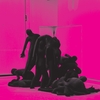 It’s necessary to take the title of Variations on Darkness with a pinch of salt, as perhaps the key abiding feature of the two lengthy tracks on this album is their instinctive tendency towards coruscating brilliance. Not gradually, though, or as the product of a slow developmental process: instead, they veer between extended episodes of shadowy contemplation – streaked with bands of pitch and threatened from below by deep percussive impacts and rumbles – and vast eruptions, crowned by Jónsi’s voice, that propel and redirect the music into sequences that manage to radiate while sounding almost infinitely crushed. The impacted strata of these climaxes are an absolute wonder to behold, Jónsi becoming reduced to a incidental yet quintessential quasi-angelic presence singing out over shifting tectonic plates of beats and bass. Bearing in mind that title again, the darkness clearly is felt in these extensive, powerful plateaux – caking them in distorted and glitching crackle and crunch, and retaining a melancholic sensibility – though the sheer incandescence of these passages makes it impossible not to simply marvel in wonder at their undeniable majesty. [Vinyl/Digital]
It’s necessary to take the title of Variations on Darkness with a pinch of salt, as perhaps the key abiding feature of the two lengthy tracks on this album is their instinctive tendency towards coruscating brilliance. Not gradually, though, or as the product of a slow developmental process: instead, they veer between extended episodes of shadowy contemplation – streaked with bands of pitch and threatened from below by deep percussive impacts and rumbles – and vast eruptions, crowned by Jónsi’s voice, that propel and redirect the music into sequences that manage to radiate while sounding almost infinitely crushed. The impacted strata of these climaxes are an absolute wonder to behold, Jónsi becoming reduced to a incidental yet quintessential quasi-angelic presence singing out over shifting tectonic plates of beats and bass. Bearing in mind that title again, the darkness clearly is felt in these extensive, powerful plateaux – caking them in distorted and glitching crackle and crunch, and retaining a melancholic sensibility – though the sheer incandescence of these passages makes it impossible not to simply marvel in wonder at their undeniable majesty. [Vinyl/Digital]
4 | The Caretaker – Everywhere at the end of time – Stage 6
 “The downward spiral of deterioration running through Everywhere at the end of time has been shaped by a number of factors, each of which has gradually encroached more and more oppressively on the exquisite fragments of ballroom music that are the source of all its material … . The first is its dependence, in the first three stages, on repeating loops of music, affording mere windows into something much bigger and grander … . Thereafter, those fragile loops are subjected to further factors, whereby the music is in different ways slowed down and filtered …, and heard from within increasing quantities of reverb and surface noise. Where the first half of the cycle, … is preoccupied by these factors, the second half … is abruptly transfigured. Where Stages 4 and 5 were impenetrable, Stage 6 is unfathomable. … What remains: rumble, crackle, hiss, like some amalgam of the movement of wind, sand and sea; what it began life as is impossible to tell. … What also remains is resonance, vestiges of ideas strenuously dredging their way from boundless depths to emerge as muffled yet reverberant echoes of something once tangible. Everywhere at the end of time ultimately goes far, far beyond what words – or, at least, my words – can adequately convey. It is simply incredible.” (reviewed in March) [CD/Vinyl/Digital]
“The downward spiral of deterioration running through Everywhere at the end of time has been shaped by a number of factors, each of which has gradually encroached more and more oppressively on the exquisite fragments of ballroom music that are the source of all its material … . The first is its dependence, in the first three stages, on repeating loops of music, affording mere windows into something much bigger and grander … . Thereafter, those fragile loops are subjected to further factors, whereby the music is in different ways slowed down and filtered …, and heard from within increasing quantities of reverb and surface noise. Where the first half of the cycle, … is preoccupied by these factors, the second half … is abruptly transfigured. Where Stages 4 and 5 were impenetrable, Stage 6 is unfathomable. … What remains: rumble, crackle, hiss, like some amalgam of the movement of wind, sand and sea; what it began life as is impossible to tell. … What also remains is resonance, vestiges of ideas strenuously dredging their way from boundless depths to emerge as muffled yet reverberant echoes of something once tangible. Everywhere at the end of time ultimately goes far, far beyond what words – or, at least, my words – can adequately convey. It is simply incredible.” (reviewed in March) [CD/Vinyl/Digital]
3 | Bobby Krlic – Midsommar (Original Score)
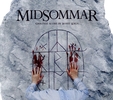 One of the best films of the year, and one of the most significant horror movies of living memory, finds its equal in the flawless accompanying score created by Bobby Krlic. In much the same way that Ari Aster directs the film, Krlic directs his music such that it moves freely between the poles of folk tradition and avant-garde radicality, between radiant ecstasy and ever more dark terror, between sustained stillness and unbroken tremors. The infinite levels of grief experienced by main character Dani (brief clips of which are unsettlingly incorporated into the score) find expression in percussive swells that swallow up everything above them, while the atmosphere and mindset of the Hårga community is captured in music that attains beauty while remaining incomprehensible, that suggests intimacy while remaining remote, that suggests bliss but only of the most extreme, life-changing (and life-ending) kind. It’s an atmosphere that Krlic often turns into a dense fug, pitch and noise hanging in the air like thick smoke and incense, bringing to life the malevolent majesty and frenzied catharsis displayed in the film’s stunning climax. A soundtrack like this make you realise afresh just how moribund and predictable the movie music industry has become. The fact that Midsommar is one of the greatest film of recent times is in no small part due to Bobby Krlic’s music; it’s a devastating testament to the incredible emotional and imaginative heights, depths, ambiguities and complexities that a film score can capture and communicate. [CD/Vinyl/Digital]
One of the best films of the year, and one of the most significant horror movies of living memory, finds its equal in the flawless accompanying score created by Bobby Krlic. In much the same way that Ari Aster directs the film, Krlic directs his music such that it moves freely between the poles of folk tradition and avant-garde radicality, between radiant ecstasy and ever more dark terror, between sustained stillness and unbroken tremors. The infinite levels of grief experienced by main character Dani (brief clips of which are unsettlingly incorporated into the score) find expression in percussive swells that swallow up everything above them, while the atmosphere and mindset of the Hårga community is captured in music that attains beauty while remaining incomprehensible, that suggests intimacy while remaining remote, that suggests bliss but only of the most extreme, life-changing (and life-ending) kind. It’s an atmosphere that Krlic often turns into a dense fug, pitch and noise hanging in the air like thick smoke and incense, bringing to life the malevolent majesty and frenzied catharsis displayed in the film’s stunning climax. A soundtrack like this make you realise afresh just how moribund and predictable the movie music industry has become. The fact that Midsommar is one of the greatest film of recent times is in no small part due to Bobby Krlic’s music; it’s a devastating testament to the incredible emotional and imaginative heights, depths, ambiguities and complexities that a film score can capture and communicate. [CD/Vinyl/Digital]
2 | Aurora – A Different Kind of Human (Step 2)
 From the first time i clapped ears on this album back in June, i knew it was one of the most incredible collections of songs i’d ever heard. Let’s back up a bit; Aurora’s 2016 debut album All My Demons Greeting Me As A Friend made it clear she was a unique and formidable song-writing talent – with a simply astonishing voice – backed up by last year’s Infections of a Different Kind (Step 1), which acts as the first part of an artistic statement completed by this release. The power of this album – well, some of its power; i won’t pretend to be able to grasp exactly how on earth Aurora’s music fully attains its power – comes in part from its dual perspective, looking both inward and outward. Inwardly, the songs address uncertainty, pain, the conflicts and implications arising from our desires and actions. Outwardly, they confront the fact that our world has become a difficult and troubling place, one that many find hard to comprehend and harder still to know how to think, be and act. It’s perhaps a bold claim to say that in Aurora’s particular kind of art pop – informed as it is at its deepest levels by a unique form of whimsicality – there are answers to be found, but i believe that there are. On a more superficial level, these songs can serve as a soothing balm, providing empathy and understanding. More deeply, though, they act as a profound challenge to who we’ve been and what we want to be hereafter. i don’t think i’ve heard anything more stirringly direct this year than the chorus of ‘Daydreamer’, pointing out how easily “we become night time dreamers / And street walkers, small talkers / When we should be daydreamers / And moonwalkers and dream talkers”. This isn’t just some kind of manic pixie dream girl urge to self-betterment, but an encouraging adjuration to each of us to aspire to something lofty, imaginative and inclined towards kindness, joy and love. It’s hard not to feel the world would quickly become a much more wonderful place to inhabit and share when filled with these kinds of motivations. An essential, necessary and above all supremely beautiful album. [CD/Vinyl/Digital]
From the first time i clapped ears on this album back in June, i knew it was one of the most incredible collections of songs i’d ever heard. Let’s back up a bit; Aurora’s 2016 debut album All My Demons Greeting Me As A Friend made it clear she was a unique and formidable song-writing talent – with a simply astonishing voice – backed up by last year’s Infections of a Different Kind (Step 1), which acts as the first part of an artistic statement completed by this release. The power of this album – well, some of its power; i won’t pretend to be able to grasp exactly how on earth Aurora’s music fully attains its power – comes in part from its dual perspective, looking both inward and outward. Inwardly, the songs address uncertainty, pain, the conflicts and implications arising from our desires and actions. Outwardly, they confront the fact that our world has become a difficult and troubling place, one that many find hard to comprehend and harder still to know how to think, be and act. It’s perhaps a bold claim to say that in Aurora’s particular kind of art pop – informed as it is at its deepest levels by a unique form of whimsicality – there are answers to be found, but i believe that there are. On a more superficial level, these songs can serve as a soothing balm, providing empathy and understanding. More deeply, though, they act as a profound challenge to who we’ve been and what we want to be hereafter. i don’t think i’ve heard anything more stirringly direct this year than the chorus of ‘Daydreamer’, pointing out how easily “we become night time dreamers / And street walkers, small talkers / When we should be daydreamers / And moonwalkers and dream talkers”. This isn’t just some kind of manic pixie dream girl urge to self-betterment, but an encouraging adjuration to each of us to aspire to something lofty, imaginative and inclined towards kindness, joy and love. It’s hard not to feel the world would quickly become a much more wonderful place to inhabit and share when filled with these kinds of motivations. An essential, necessary and above all supremely beautiful album. [CD/Vinyl/Digital]

1 | Þóranna Björnsdóttir & Federico Placidi – LUCID
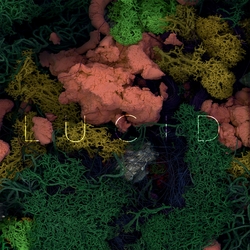 “But the work that dazzled and entranced me most, leaving me literally gasping at its end, was LUCID, and that was despite the fact we only heard an excerpt of it.” This was my response, at the Nordic Music Days last month, to hearing 20 minutes of edited highlights from Þóranna Björnsdóttir and Federico Placidi’s hour-long work. On the strength of those minutes, it was apparent that LUCID was something rare and marvellous, magical even, suspicions confirmed when i was finally able to be immersed in the complete work a week or so later.
“But the work that dazzled and entranced me most, leaving me literally gasping at its end, was LUCID, and that was despite the fact we only heard an excerpt of it.” This was my response, at the Nordic Music Days last month, to hearing 20 minutes of edited highlights from Þóranna Björnsdóttir and Federico Placidi’s hour-long work. On the strength of those minutes, it was apparent that LUCID was something rare and marvellous, magical even, suspicions confirmed when i was finally able to be immersed in the complete work a week or so later.
From one perspective, LUCID is an acousmatic piece, its four movements combining electronic materials with field recordings recorded in Iceland and Rome. Yet it’s so much more than that, that describing in this way is absurdly reductive. It’s acoustic, it’s ambient, dark ambient too, it’s electronic, it’s an abstract landscape of shifting shapes and colours, it’s a work of environmental reportage. It’s all and it’s none of these things. So – is that clear?
Neither Þóranna nor Placidi show the slightest inclination to committing to any one specific aesthetic or convention or style. It doesn’t take long to realise how incredibly liberating this feels; there’s the immediate sense of entering something epic in opening movement ‘Singularity’, but no sense at all of what this “something epic” is, or indeed what it might or could possibly be. We see something looking like coral or moss on the cover artwork, which perhaps directs our thoughts and our imaginations into a place of organic forms and colours, yet the music consistently works on an abstract level using elements that nonetheless seem extremely identifiable. Or, as i described it following that first encounter, “an obvious product of (non-synthetic) artifice, like an in-depth reinterpretation and reorganisation of nature”. It’s a liminal music, caught within a space influenced by a host of compositional impulses and traits, channelling, blending and interpolating them in its construction of a new kind of musical grammar.
‘Main sequence’ disrupts any suggestion that ‘Singularity’ established the limits of this grammar, glitching and contorting its materials in a way that feels at odds with the smooth evolution of ideas that preceded it. This is the nature of LUCID‘s liminality, regularly reminding us that we’re listening to something created, painstakingly sculpted, while at the same time repeatedly lulling us into a false perception that the work is a vast slab of something natural, being merely presented to us as a fabulously otherworldly sonic artefact. As such, it’s a kind of ‘pseudo-organic super-music’, given yet more veracity due to a primordial potency that makes every moment of it seem to emerge from an intimidatingly elemental place of earth, fire and water. (It’s interesting how often that happens when Icelandic composers are involved.)
Perhaps this suggests that LUCID is all about big, imposing statements. Quite the opposite: ‘Main sequence’ tilts two-thirds through, entering a vast plane of slow-moving ambient elegance, having the electrified calm of sunshine following a thunderstorm; ‘Interior’ similarly opens out into a gentle atmosphere of diaphanous fuzz, while final movement ‘Lost time’ spends its opening minutes ruminating quietly on a collection of electronic tones. In these and other passages, the work takes on a tenderness that’s all the more tangible, tactile even, in the wake of where we’ve come – and also, in retrospect, of where we end up later on.
But for all their nuanced delicacy, it’s not these periods of repose that prove the most memorable when considering LUCID as a whole. i spoke before of “primordial potency”, and it’s above all the power that the work articulates that makes it the stunning sensory behemoth that it is. ‘Interior’, in particular, seems to grow in a way that seems increasingly impossible, as if it lacked any kind of upper or outer limit. And when it subsides, it keeps its grip on us by rooting itself with a drone so powerful it feels as if it’s connected directly to the centre of the earth. Until, that is, a complex chorus of unknown objects are released into its atmosphere forming dense clouds. ‘Lost time’ seems to be promising to go further, developing and expanding so that it billows outward, but here LUCID once again undermines our expectations, with an extended interplay of the beats resulting from closely-placed sustained tones. It’s a daring move, threatening not only to dissipate the music’s built-up energy but also to make us forget where we came from. Yet it works like a kind of suspended animation, or as if we had massively zoomed in on one tiny part of the music’s palette of materials to examine it at the atomic scale, watching its fundamental particles move while hearing their nanoscopic harmony ring out. From this infinitesimal place the work concludes by accreting scratchy layers of noise through which ever more intense harmonic bands blaze their way out, forming a transfixed coda of glory.
LUCID works on a relatively simple level, in terms of its broad fluctuations of shape, contour, texture, colour; but it’s the way it’s possible for us to move inwards and go deeper into its sonic substrate and discover such quantities and qualities of richness – drenching us in unchecked waves of pure energy – that makes it such an incredibly special, overwhelming listening experience, and such a superlative sonic achievement. Every encounter with it is utterly unique, new and rapturous.

Given the parametres, here is my 2019 list, reduced to the chamber music purchases (in order of procurement):
Simon Martin: Musique d’Art (Quatuor Bozzini, with Pierre-Alexandre Maranda, cb; éditions qb)
Phil Niblock: Baobab (two works; Quautor Bozzini, éditions qb)
Pelle Gudmundsen-Holmgreen: String Quartets Vol. 1 (Nos. 1-6, first recordings; Nordic String Quartet; DaCapo)(this, by the way, was my favorite disc of the past year)
Polaris String Quartet: Flow: New Music for SQ (Six composers; online)
New Orford String Quartet: Par Quatre Chemins (Works by Dompierre, Ichmouratov, Brady (Canadian composers all); Atma)
Peter Eötvös: Two works for string quartet (Calder Quartet; BMC)
Caroline Shaw: Orange (six pieces; Attacca Quartet; Nonesuch)
Krzysztof Baculewski: String Quartets 1-4 (Tana Quartet; Dux)
Tom Johnson: Plucking (four works; Just Strings; Microfest)
Swan Hennessy: Complete works for string quartet, plus string trio (RTÉ Contempo Quartet, RTÉ Lyric)
Gustav Mahler: In meinem Himmel (three song cycles arranged for soprano and string quartet, Leider eines fahrenden Gesellen (Songs of the Wayfarer), Ruckert-Lieder, and Kindertotenlieder (Kindra Scharich, soprano, Alexander String Quartet; Foghorn Classics))
Common Sense Composers’ Collective: Spark (works by eight composers; Friction Quartet; Innova)
PUBLIQuartet: Freedom and Faith (Recital of works ranging from Hildegard of Bingen to Nina Simone; Bright Shiny Things)
Siggi String Quartet: South of the Circle (works by five Icelandic composers; Sono Luminus)
Juri Seo: Respiri (three works; Argus Quartet; Innova)
Anton Reicha: Quatuor Scientifique (Reicha Quartet; Brilliant Classics)
Hannah Lash: Filigree (four works; JACK Quartet; New Focus Recordings)
Music in the Barns: Two quartets and a quintet (works by Rose Bolton, Scott Godin and Michael Oesterle (three Canadians); New Focus)
Altius Quartet: Quadrants, Vol.3 (another installment from Navona’s series of new quartet music, with eight composers here; Navona)
NeoQuartet: Greek Music (seven Greek composers; Phasma-Music)
Terry Riley: Sun Rings, for string quartet, chorus and “space sounds” (Kronos Quartet; Nonesuch)
Morton Feldman: Piano (five disc set of the complete piano works, including juvenalia, other unpublished material and a ninety minute performance of Triadic Memories; Philip Thomas, piano; Another Timbre)
Sirius Quartet: Playing on the Edge (works by five composers; Navona)
Philip Glass: Annunciation (including String Quartet No.8, Annunciation Piano Quintet and a few other shorter pieces; Brooklyn Rider (sq) and Paul Barnes (pf); Orange Mountain Music)